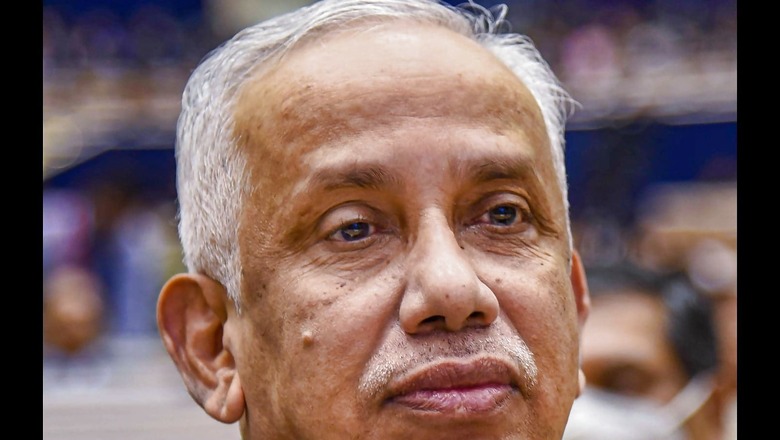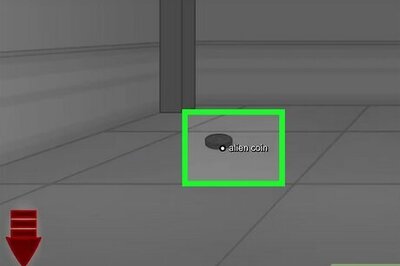
views
The appointment of governor of state is mandated by the Constitution of India under Articles 153 and 155. Recently, the constitutional post of Governor for state of Andhra Pradesh was affirmed by the President of India. Justice S. Abdul Nazeer, a former Supreme Court judge will serve as the head of state.
Despite no procedural fallacy in the appointment of the former Supreme Court judge as Governor of state by the President of India on February 12, soot from those in echo chambers continues unabatedly. A coterie of persons, infamous for raking controversies (when there should be none) have criticized the appointment in a manner which is extremely uncalled for. It is necessary to point out here that the criticism of an appointment which is effectuated by a government in power is not the problem – but the genesis of this criticism, which harps on creation of the Ram Mandir at Ayodhya.
Justice S Abdul Nazeer’s judicial legacy is unquestionable. His journey as then Supreme Court judge and now as Governor of a state is remarkable, especially since his early life was tumultuous and he was the first lawyer in his family. Though not unheard of, a first-generation lawyer reaching the top court of the country is indeed an achievement, especially in an industry which thrives on nepotism and familial favours. Justice Nazeer upheld the right to privacy as a fundamental right in the landmark KS Puttaswamy judgment and dissented in the triple talaq case. Both the judgments were passed in 2017. His dissent in Triple Talaq elucidated that it was not open for courts to accept an egalitarian approach, over a practice which constituted an integral part of religion as “religion is a matter of faith and not logic”.
In 2019, Justice Nazeer also happened to be part of the bench five-judge bench which unanimously held that the 2.77 acres of land in Ayodhya must be handed over for the construction of Ram Mandir. This exactly is why the ecosystem is unable to pull the brakes over their infamous outcries of “democracy is dead”. Unfortunately, while constructive discourse calls for engaging over the structural fallacy in the Constitution itself, which favours a parliamentary type of cabinet but leaves the rest of it on adaptation of the Government of India Act 1935, the baritone of broken records has directly attributed motives to a former Supreme Court judge. Obviously, this is not new. The entire country already saw the standard of discourse riddled with expletives in Parliament last week. Notably, the TMC leader who used expletives in the parliament has called the appointment of the longest serving Supreme Court judge (now retired) as the governor of a state “shameful”, simply because he was part of the Ram Janmabhoomi judgment bench. The spectre of the past – a landmark decision from four years ago, by a Supreme Court constitution bench rightfully upholding the faith of millions, that stood at the brink of languishment over centuries, amid disruption and upon depraved invaders — is the real irritant for this cabal.
In the thick of this substandard discourse, constructive critical evaluation of every brick upon which the development of India stands gets lost, in a rut of pejoratives. The ecosystem which is often heralded by the opposition as the “safety valves of democracy” not only misinforms the public but also chooses issues which have no bearing on the future of India. For example, the recommendations of the 1983 Sarkaria Commission on Centre-state relations and the proposed amendments in appointing Governors of states continues to be missing from discourse by not just the ecosystem but also the opposition. While the Commission projected a solution-oriented approach, it emphasized on the fallacy of the structure of the constitution itself as well – a constitution which did not foresee an India where parties other than the Congress will not only survive but also thrive.
Be as it may, till the Congress continued to be at the cusp of power in the centre and over states, all was well. Again, this reflection must bear in mind that though the issue may be one of appointments as Governors of states and structural deficiencies, the novel composite structure of the Union of India which combines both the federal and unitary principles. At the same time, it also supports the idea that “national interest should take precedence despite federalism”.
Interestingly, it was Dr. BR Ambedkar who substituted the word “Federation” for “Union” in Article 1 of the Constitution. The Second Report of the Union Powers Committee had observed on August 21, 1947, “Now that partition is a settled fact, we are unanimously of the view that it would be injurious to the interests of the country to provide for a weak central authority which would be incapable of ensuring peace, of coordinating vital matters of common concern and of speaking effectively for the whole country in the international space.”
Therefore, if the issue is with appointments, shouldn’t the criticism be on structures that created them… especially since many retired judges have been appointed as governors of states in the past?
It is debatable whether the ongoing construction of the Ram Mandir at Ayodhya rankles the heart of the ecosystem, mostly because its misplaced outcry against a constitutional post is directly linked to it. Unfortunately, once again, the Ram Mandir has taken centrestage to serve political agenda, to indulge in appeasement politics.
It further remains debatable whether this is a ruthless but unsuccessful attempt at dampening the spirits of countless Indians that fought for the rightful place of Ram Lalla and trusted the Supreme Court with the revered Ram Janmabhoomi.
Sanya Talwar is Editor, Lawbeat. The views expressed in this article are those of the author and do not represent the stand of this publication.
Read all the Latest Opinions here




















Comments
0 comment